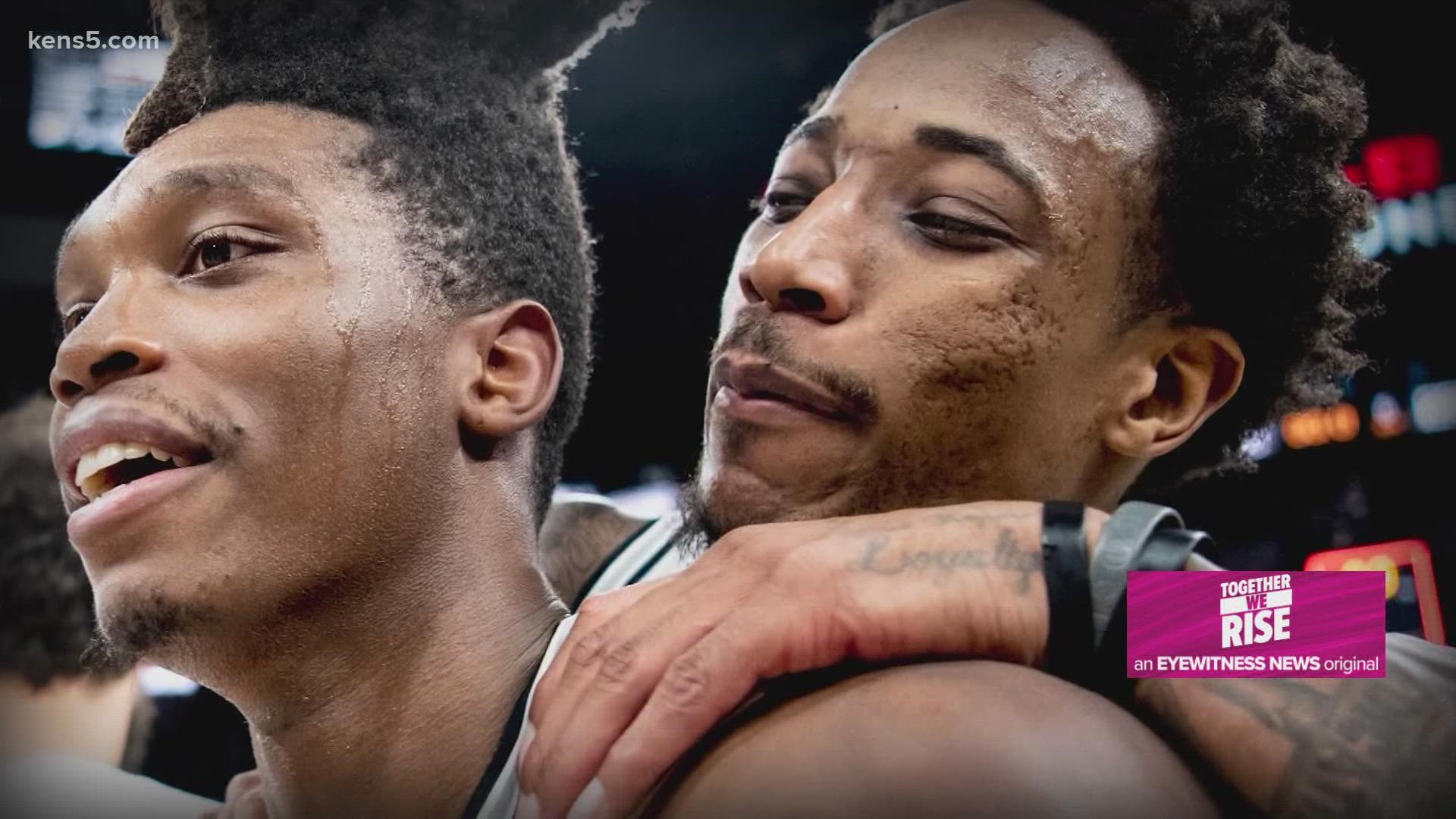SAN ANTONIO — Perhaps it's the kind of nervous anxiety some describe about the moment they fall in love? Reginald Thomas can't categorically say about the camera that left an indelible mark on him.
The Baltimore native recalls picking up his roommate's camera at college at Norfolk State University. The rest was sweat and love.
"Something about that moment, holding his camera, resonated with me in a way that I still don't know," Thomas said. "I do know that when I gave the camera back to him on that particular evening, my palms was sweating."
So began his life as a storyteller. Artless, at first.
But shooting whatever he could on campus – as well as learning to connect with people with the instrument in hand, watching YouTube sessions, diving into pictorial history and utilizing peer guidance – gave him a useful lens.
"I kind of begged my mother for the rest of the semester to get a camera," he said.
Thomas is one of two children. His mother, Wanda, invested the $500 he wanted for a camera.
The summer of 2015 put the young photographer to the test as he followed the death of Freddie Gray in Baltimore.
Gray was arrested with a knife-like instrument on April 12. Baltimore Police handcuffed and shackled him without securing him in the back of a police van.
During his more than 40 minute trip to jail, the 25-year-old sustained a severed spinal cord. He died on April 15. Thomas' Baltimore reacted in a city-ripping fiery rage.
"I was actually in school when it happened," Thomas said. "I'm standing in the dorm room lobby watching CNN and all these different news outlets, and they keep showing burning buildings. They keep calling people rioters and looters."
According to Thomas, he was assigned to cover the fallout of Gray's death for a local paper. Six officers faced criminal charges in Gray's death, and none of them were convicted.
"It feels like a responsibility, at this point, to make sure I'm documenting history the right way."
Thomas' camera was no shield for the impact of the protests, the calls for justice, the energy of trauma.
"I think part of it is knowing how images and words shape peoples' perceptions of things and people," he said.
At a certain point, the photographer felt those were the only images the world wanted to see.
A shared responsibility, through imagery
"All those things that we consume are what we internalize, and process as this is the reality," said Wendy Boaglio Gratereaux, a marketing professor at the University of Texas at San Antonio. "And that's how we shape and define our reality."
Gratereaux says there's a newfound effort to fairly represent all races and ethnicities in media, but that wasn't always the case.
"Unfortunately, in some cases, some races aren't even really portrayed, right?" Gratereaux said.
In Thomas' case, he found that photographing Black trauma became overwhelming. He recalls, while covering the funeral of a young boy and his mother, seeing a woman who resembled his sister.
His emotions led him away from that assignment and news photography at large.
"While suffering is a part of our lives and trauma is a part of our lives, it's not the only experience we have," he said. "It's not the full scope of who we are as people."
According to Gratereaux, staffing issues and time constraints can lead to media coverage that perpetuates stereotypes. But news media isn't the only type of media, and it alone, she says, isn't to blame.
The professor said movies, television, marketing, sales and social media all share a responsibility to portray all races accurately.
"Scientifically speaking, everything imprints our personalities and the way that we view the world and other people," she said. "So if I have no representation of somebody that looks like me and has the same feelings and thoughts that I do, you feel very isolated and alone."
Then, Gratereaux said, there's the question of whether the media influences us or if it's the other way around. According to her, it's both.
"A large component of our learning is through imagery and visuals," Gratereaux said. "That's color, symbolism, style, everything. These things matter a lot to people because that's the way we express ourselves is, first, visually. And then people care what you have to say or do in most cases."
According to the marketing professor, some images of people and issues get strategically used to tap emotional pressure points.
"You have to make the pain greater than apathy," she said. "So you have to continue to highlight that pain, make it pervasive because then that person is motivated to maybe go vote."
Thomas' eye for good images landed him a gig with the Boston Red Sox. The development of his craft from that experience then led to his current job as team photographer for the San Antonio Spurs.
"People see athletes and (do) not consider them as human beings with emotions," Thomas said.
Heavy is the hand that carries the camera. Thomas tries to maximize and respect his access to the players of a storied NBA franchise.
"Moments that put them out there as people for people to feel closer to them, whether they playing basketball or not," he said.
Thomas' hands still get sweaty when he grabs his camera before a game, and he also drips with awareness about the power of his pictures.
"I spent a lot of time making this work," he said.

